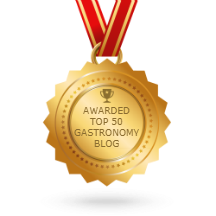* * * * *
The Peñon de San Cristóbal towers over the amazing white mountain town of Grazalema (Cádiz).
Kay and I were traveling through the White Villages of Cádiz, on February 5th on our way to Ronda from Sevilla via Coronil, Zahara de la Sierra and Grazalema and the next day on February 6th from Ronda via Grazalema, Benamahoma and El Bosque to El Puerto de Santa María. On the mountain roads on our way to and beyond the magical Pueblo Blanco (white village) of Grazalema, we encountered three bands of Iberian ibex, Spanish ibex, Spanish wild goat, or Iberian wild goat (Capra pyrenaica). The first group we encountered was on the wild and curvy road that leads from Zahara de la Sierra over the Puerto de las Palomas below the San Cristóbal peak, but there was no place to stop along the road to get picture.
Iberian ibex, Spanish ibex, Spanish wild goat, or Iberian wild goat (Capra pyrenaica).
The next day, after a few tapas at Bar Rumores in the center of Grazalema, we drove up through hills past the source of the Guadalete River and encountered two more groups of Ibex, one behind some fenced in property, the others nearer the road (when they saw me, they bolted up a rocky hill showing their mountain climbing prowess!).
At one point a female Ibex stops to urinate, at which point a buck, coming along behind her, sniffs the ground then sits down on the spot where she urinated.
_____________________________________________________
Gerry Dawes is the Producer and Program Host of Gerry Dawes & Friends, a weekly radio progam on WPWL 103.7 FM Pawling Public Radio in Pawling, New York.
Dawes was awarded Spain's prestigious Premio Nacional de Gastronomía (National Gastronomy Award) in 2003. He writes and speaks frequently on Spanish wine and gastronomy and leads gastronomy, wine and cultural tours to Spain. He was a finalist for the 2001 James Beard Foundation's Journalism Award for Best Magazine Writing on Wine, won The Cava Institute's First Prize for Journalism for his article on cava in 2004, was awarded the CineGourLand “Cinéfilos y Gourmets” (Cinephiles & Gourmets) prize in 2009 in Getxo (Vizcaya) and received the 2009 Association of Food Journalists Second Prize for Best Food Feature in a Magazine for his Food Arts article, a retrospective piece about Catalan star chef, Ferran Adrià.
In December, 2009, Dawes was awarded the Food Arts Silver Spoon Award in a profile written by José Andrés.
". . .That we were the first to introduce American readers to Ferran Adrià in 1997 and have ever since continued to bring you a blow-by-blow narrative of Spain's riveting ferment is chiefly due to our Spanish correspondent, Gerry "Mr. Spain" Dawes, the messianic wine and food journalist raised in Southern Illinois and possessor of a self-accumulated doctorate in the Spanish table. Gerry once again brings us up to the very minute. . ." - - Michael & Ariane Batterberry, Editor-in-Chief/Publisher and Founding Editor/Publisher, Food Arts, October 2009.
Pilot for a reality television series
on wine, gastronomy, culture and travel in Spain.
Experience
Spain With Gerry Dawes: Customized Culinary, Wine & Cultural
Trips to Spain & Travel Consulting on Spain
Gerry Dawes can be reached at gerrydawes@gmail.com; Alternate e-mail (use only if your e-mail to AOL is rejected): gerrydawes@spanishartisanwine.com
Gerry Dawes can be reached at gerrydawes@gmail.com; Alternate e-mail (use only if your e-mail to AOL is rejected): gerrydawes@spanishartisanwine.com








































